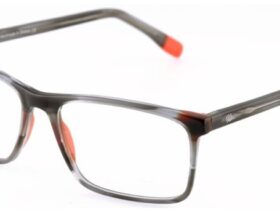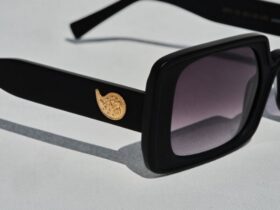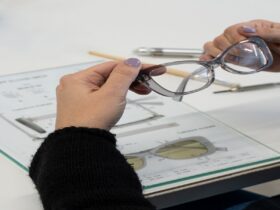Sunglasses, a quintessential accessory in the contemporary world, serve the dual purpose of safeguarding our eyes and making a fashion statement. However, the history of sunglasses is a rich tapestry woven through several civilizations and technological advancements. Let us embark on an in-depth historical analysis of sunglasses, from antiquity to the present day.

Ancient Beginnings
The inception of sunglasses can be traced back to the Roman Empire around the 1st century AD. Emperors like Nero are said to have watched gladiator fights through polished gems to reduce glare and bright lights. Meanwhile, in the Arctic, the Inuit and Yupik peoples crafted snow goggles from flattened walrus ivory or wood with narrow slits, to protect against snow blindness caused by the reflection of the sun on snow and ice.
In China during the 12th century, sunglasses took a slightly different form. Here, they were used by judges to conceal their emotions from the courtroom. These flat panels of smoky quartz were not used to protect against the sun but to hide the eyes.
Renaissance and Enlightenment: Tinted Lenses Emerge
The real turning point in the evolution of sunglasses came during the late Renaissance and early Enlightenment period. By the 18th century, James Ayscough, an English optician, was one of the earliest proponents of the use of tinted lenses. He theorized that lenses tinted blue or green would alleviate specific eye conditions. Consequently, tinted glasses began to be used for correcting vision problems rather than protection from the sun.
20th Century: The Rise of Modern Sunglasses
During the early 1900s, sunglasses as we recognize them began to take shape. Initially popularized by movie stars who used them to shield their eyes from the harsh studio lights, sunglasses soon became fashionable among the general public who were eager to emulate these stars.
The landmark development in sunglasses technology came in 1936 when Edwin H. Land, the Polaroid founder, introduced polarized lenses, drastically reducing glare.
This period also marked the advent of the iconic Ray-Ban Aviators in 1937, originally designed for pilots to protect their eyes while flying. During World War II, sunglasses became standard issue for American soldiers, and the “aviator” style grew in popularity.
Post World War II: A Fashion Statement
The post-war era saw sunglasses become synonymous with glamour and style. Fashion designers and Hollywood continued to influence the styles that became popular. From Marilyn Monroe’s cat-eye glasses to Audrey Hepburn’s oversized frames in Breakfast at Tiffany’s, sunglasses became a must-have fashion accessory.
By the 1970s and 1980s, sunglasses were not just functional but an expression of individuality. Brands like Oakley and Ray-Ban introduced a variety of styles, including the Wayfarer, which remains popular to this day.
The 21st Century: Technological Advancements and Eco-Friendly Materials
In the 21st century, the sunglasses industry saw a surge in technological advancements. This era has been characterized by the integration of high-quality lenses offering 100% UV protection, lightweight materials, and even smart technology into frames.
Moreover, with growing environmental consciousness, sunglasses made from eco-friendly materials, such as bio-acetate, have become increasingly popular. Leading sunglasses manufacturers have forged partnerships with companies like Mazzucchelli to create frames from sustainable materials.
Furthermore, custom eyewear manufacturers now offer consumers the ability to tailor their sunglasses to their personal preferences, ensuring a combination of style, comfort, and functionality.
The history of sunglasses is not merely a timeline; it is an ongoing narrative of innovation, cultural shifts, and technological advancements. From crude snow goggles to custom-made acetate frames, sunglasses have transformed immeasurably. As consumer demands continue to evolve and technology advances, sunglasses will undoubtedly continue to reflect the zeitgeist of each era. Their journey from a functional item to a potent symbol of style and identity is a testament to their enduring appeal and utility.









Leave a Reply